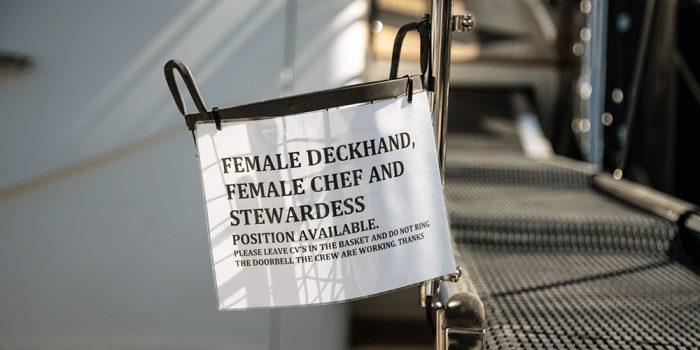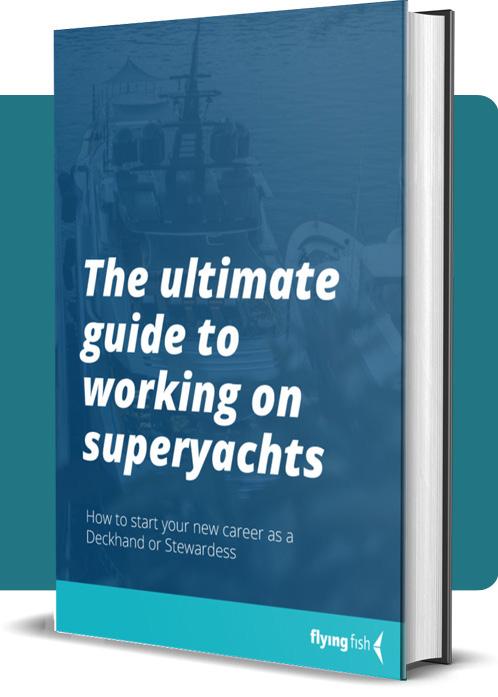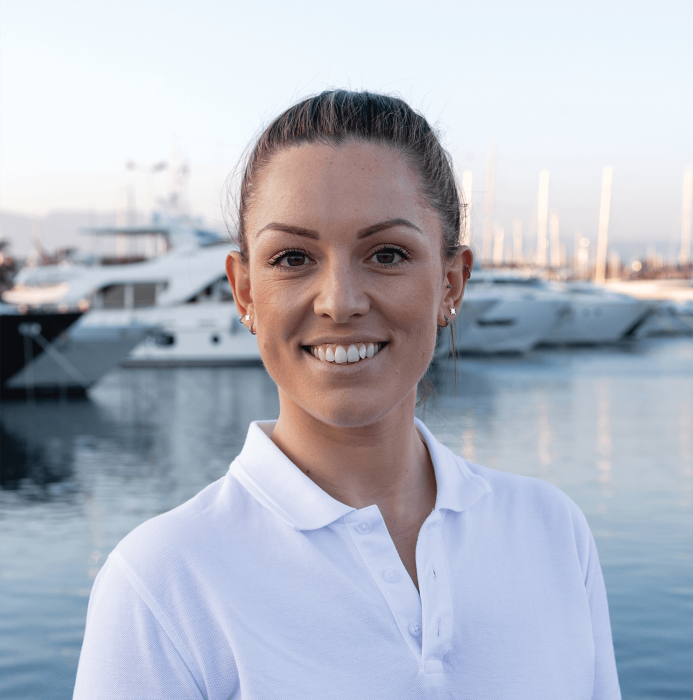
How to write a Yachting CV
If you are new to the Superyacht industry, then you have probably not written a yachting CV before. If you need help writing a Yachting CV, our guide will explain what to do and what not to do.
Writing a Yachting CV differs from a CV that you may write for a land-based job. For example, on a yachting CV, you are asked to provide a picture and give your date of birth, which is considered discriminatory if you apply for a land-based job.
At Flying Fish, we help hundreds of customers new to the Yachting industry write a professional yachting CV. The yachting CV is so important, we include ono-to-one support during our Superyacht Deckhand and Superyacht Steward/ess courses. This forms part of our Career Support Service.
First, a bit of background to a Yachting CV
Your CV is a summary of your skills, experience, and interests. It explains why you are a good fit for the Deckhand or Steward/ess position, plus all the skills and experience you have to offer the yacht.
Research indicates that the reader forms an opinion about your CV in just a few seconds. Therefore, it is crucial to ensure that your CV is engaging and flawless.
The yachting CV must include character references, as talking to somebody who knows you gives confidence to the employer.
Your yachting CV needs to create a good first impression and be brief and to the point. It’s a sales pamphlet, not an essay.

How to write a Yachting CV
The Yachting CV breaks down into seven topics. You don’t have to use our CV template format. Some crew agents may want the headings in a different order. You can design your CV template but ensure you have covered the seven headings below.
- Personal information
- Your photo
- Profile
- Qualifications
- Work/Yachting experience
- Hobbies and interests
- References
A few golden rules
Before we dive into the detail, it is worth highlighting a few important points:
Honesty
You must be honest. Don’t worry if you have not worked on a superyacht before, it’s not an obstacle to getting a job. If you are a smoker say so. If you have visible tattoos then say so and let the employer decide.
Character
Working on a yacht, whether a small sailing yacht or a large superyacht your character is key. The employer will probably pay more attention to your character/work ethic than your qualifications.
Getting the format right
How you design your yachting CV is just as important as its content. The font you use, and how you present it also play a significant role. Choose a font like Calibri, 11 points, or Verdana 10 points as they are easy to read. Make sure you save your CV as a PDF file or similar format that can be opened on both a MAC or PC.
Personal Information
This is the easy bit, follow the prompts in our CV template. Make sure you add the international dialing code, +44, as an example. Add your current location but bear in mind this will change.
Social Media
Today we all have an online profile. You will add your name, DOB and upload a photo to your CV. Yachts interested in you will likely look at your social media to see what you do in your free time.
Ensure your Instagram, Facebook, and any other profiles confirm what you say about yourself in your CV. For example, if you tell the reader that you are a non-smoker only to find recent images on your social media feeds of you smoking, it will cast doubt in the readers mind to your honesty or perhaps lead to an awkward conversation during your interview!
Superyacht crew are likely to contact you on WhatsApp, Facebook Messenger, or Instagram. A Captain may ask you to send your CV via one of these channels. We recommend you become familiar with the process of sending your Yachting CV, via WhatsApp, and Facebook Messenger.
The photo
You must add a passport-sized head and shoulders image to your CV. No selfies! Ask someone to take a photo of you in the morning or evening when the sun is lower to prevent squinting.
It’s a good idea to wear a polo or T-shirt, no branding – something comfortable. No need for a shirt or tie; after all, you won’t be wearing one onboard.
Don’t apply filters or Photoshop your image to enhance it. Keep the size of your photo below 250kb. Many boats download CVs using satellite, so file size is important.
Girls, if you have long hair, tie it back so that we can see your face. We advise wearing minimal makeup and jewelry. Men need to be clean-shaven; make sure your hair neat and tidy.
Below are some examples of CV photos taken of Flying Fish customers.
Qualifications
Start with the most important qualifications first: STCW Basic Safety Training, PDSD, ENG1 medical, Powerboat Level 2, etc. All your qualifications should be bullet-pointed.
If you have any additional skills relevant to the job you are applying for, then include them here, (Watersports Instructor, Diving, PT Instructor, Beauty, massage, to name a few). We don’t need to know your GCSE results.
Yachting experience
If you have worked on a yacht before, sailed with family or friends, worked on a ferry, dive boat, etc. then here is where you provide a brief summary of your experience so far.
Detail when you were onboard, your position, and the yacht’s name. If you don’t have any yachting experience, don’t worry, remove this section from your yachting CV.
Work experience
Place your work experience chronologically, with your most recent position first. Please describe the skills you learned and how you exceeded expectations in your job, using only two or three sentences.
Hobbies and interests
This is arguably the most important section; what do you like to do in your spare time? Generally, yacht crew are outgoing people who like sport, travel, and adventure.
If you share a passion for the outdoors, you will fit in well. Maybe you play a sport, keep fit, are a keen photographer, have run a marathon, or enjoy travel. All these are relevant as they show your character.
References
You must list two references in the same format as shown in our Yachting CV template, name, telephone, email. Your references may come from a previous employer or somebody that has worked with you. Your reference can’t come from a family member!
Most recruitment agents ask for a written reference as part of their recruitment process.
What to do next
Now that you have finished your Yachting CV, there are a couple more tasks to do.
- Ask somebody to read your Yachting CV to ensure it makes sense and reads well.
- Spell-check your CV, then spell-check it again!
- Save your CV as a PDF. You can open a PDF on any device. A PDF is a condensed file, so if the reader downloads your CV, it doesn’t chew up all data.
- Your Yachting CV may change. You will probably want to change your photo, and your location will change when you start looking for work. If you perform day work, we will add the yacht you worked on and the tasks you completed to your Yachting CV.
Once you are happy with your Yachting CV, you can start looking for your dream job. You can search for Superyacht jobs on Facebook, YotSpot, or through a Superyacht Recruitment Agency.
Learn about working in the Superyacht Industry by downloading our free guide on working on Superyachts.




